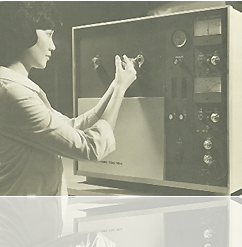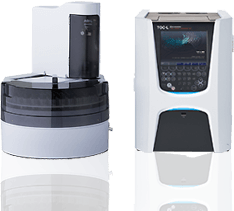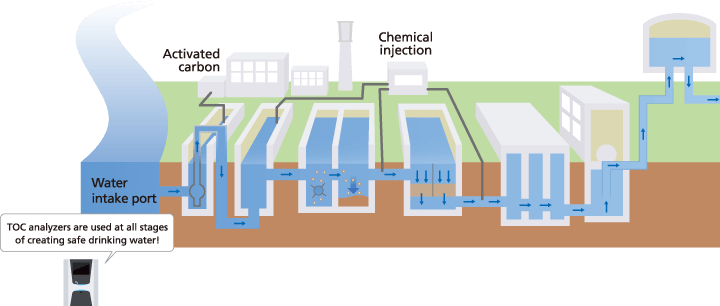

TOC Academy

TOC Analysis for Public Drinking Water Management
One of the public drinking water inspection parameters is total organic carbon (TOC).
The following describes the role of TOC in managing public drinking water.
What is “TOC”?
TOC is short for total organic carbon and is an index of organic matter used in a wide variety of fields.
In the field of public water supply systems, potassium permanganate consumption was previously used as an index of organic matter. However, potassium permanganate consumption measurements had the following drawbacks.
- Values can vary depending on the type of organic matter in water.
- Measurement results can vary depending on the person performing the measurement.
- Measurement accuracy is not consistent even for measurements performed by the same person.
For these reasons, TOC measurement attracted interest as an instrumental analysis method that enables oxidation of nearly 100 % of organic matter and that does not vary between individuals. Therefore, TOC was introduced as a new water quality standard in 2005.
TOC is not only easy to measure easily and accurately with instrumental analysis, but also can be measured quickly in only a few minutes.
- For more information about TOC, click here
Purpose of Measuring TOC
Confirming the safety of public drinking water
Reactions between organic matter and disinfectants used for water treatment are said to generate substances that are harmful to humans. Therefore, measuring TOC in public drinking water provides an important index for confirming the safety of public drinking water.
The TOC level is also said to affect the taste of public drinking water, so it can be used as an index for how good public drinking water tastes.
Water Treatment Management
A variety of processes are used to eliminate microorganisms and organic matter from water at water treatment plants.
Measuring the TOC level at each process step can be used to confirm that each process is functioning properly. (pH and turbidity values are also measured in addition to TOC.) In addition to confirming water treatment functions, measuring TOC can also help optimize water treatment. Adjusting the amount of chemicals used based on the TOC values measured at each process step can also help reduce water treatment costs.



